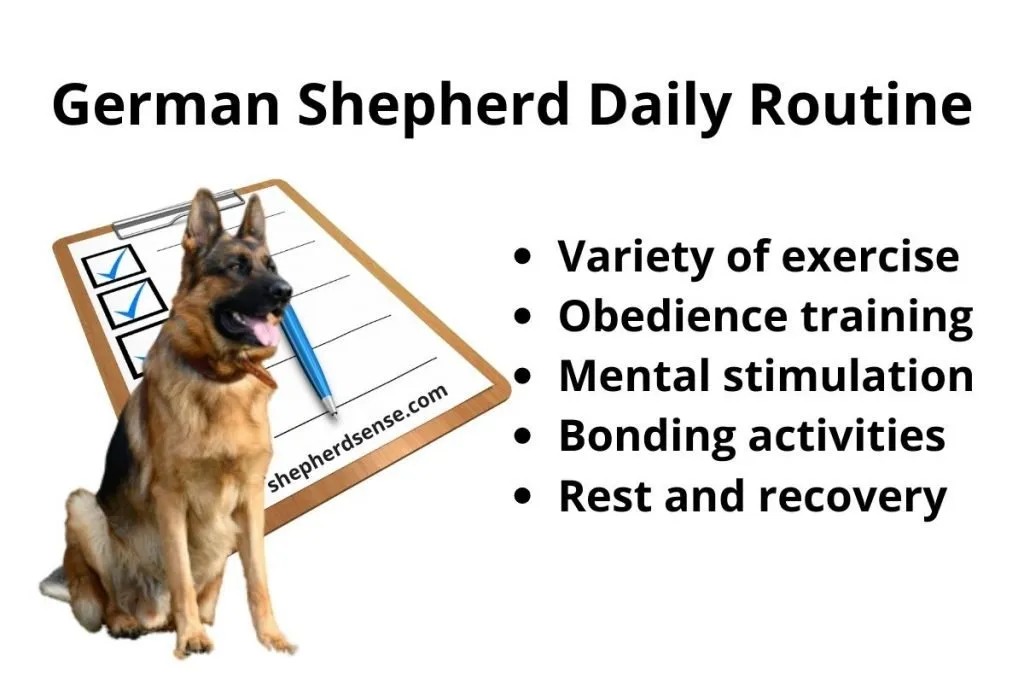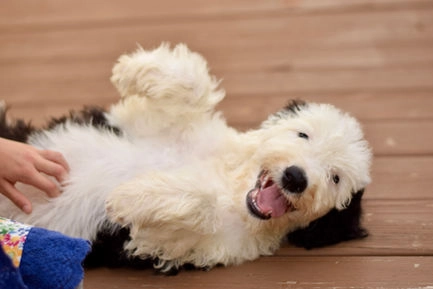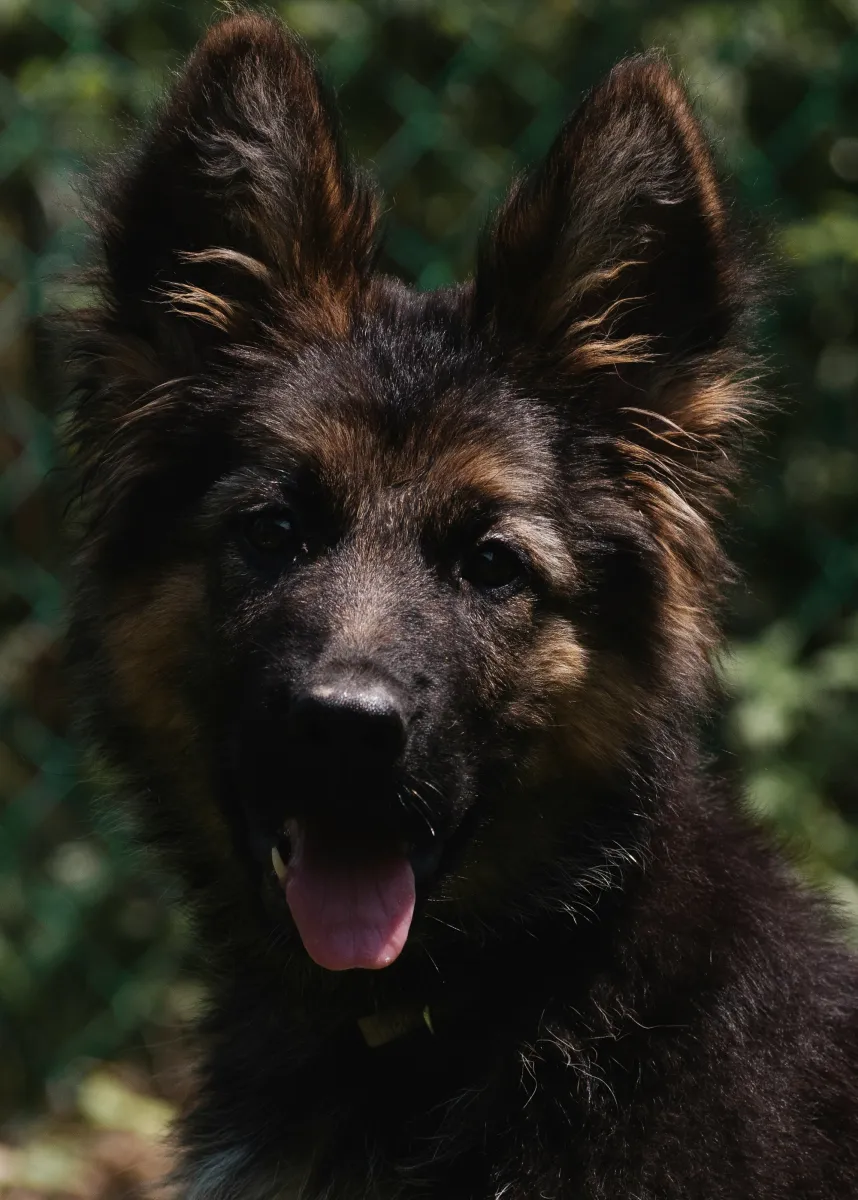Are you struggling to choose between a Sheepadoodle or a German Shepherd for your home? Selecting the right dog breed can make a big difference in your family’s happiness and lifestyle fit.
As a pet enthusiast, I know that finding the perfect companion dog is crucial for a joyful home. I’ll share advice that goes beyond the basics, offering guidance based on real dog owner experiences and breed expertise.
Sheepadoodles and German Shepherds are both incredible dog breeds, each with unique traits. The right choice can enhance your daily life and create lasting memories, making it a heartfelt investment.
In this guide, you’ll learn about the differences in temperament, grooming needs, exercise requirements, and how to choose the best breed for your lifestyle.
Let’s dive in!
Breed Origins and History
Sheepadoodle
The Sheepadoodle is a designer dog that’s a mix between the Old English Sheepdog and the Poodle. This breed started gaining popularity in the early 2000s as people looked for a family-friendly, hypoallergenic dog with the intelligence of a Poodle and the gentle nature of the Sheepdog. Because it’s a hybrid, Sheepadoodles often inherit the best traits from both parents, like their friendly temperament and low-shedding coat.
German Shepherd
German Shepherds are a purebred breed with roots tracing back to Germany in the late 19th century. Originally bred as herding dogs, they quickly became known for their intelligence, loyalty, and versatility. German Shepherds have been used widely in police and military roles, search and rescue, and as working dogs, which shaped their strong protective instincts and high energy levels.
How Origins Shape Their Traits
Knowing their backgrounds helps explain why Sheepadoodles tend to be more laid-back and sociable, making them great family pets that are easier on allergy sufferers. On the other hand, German Shepherds are naturally more alert, protective, and high-energy due to their herding and working dog roots. This makes each breed fit different kinds of owners and lifestyles depending on what you’re looking for in a dog.
Physical Characteristics Comparison Size and Weight Coat and Shedding Appearance

When comparing the Sheepadoodle vs German Shepherd, size and weight are key differences to note. Sheepadoodles typically weigh between 45 to 80 pounds, depending on whether they lean more towards the Old English Sheepdog or Poodle side. German Shepherds are usually a bit heavier and taller, with adult males weighing 65 to 90 pounds and standing around 24 to 26 inches tall.
Coat and shedding vary a lot between these two. Sheepadoodles often inherit the Poodle’s low-shedding, curly coat, making them a popular choice for people looking for hypoallergenic dog breeds. They still need regular grooming to prevent mats but won’t leave hair all over your home. German Shepherds have a dense double coat that sheds heavily, especially during seasonal changes, so expect more brushing and cleanup with this breed.
In terms of appearance, Sheepadoodles sport a fluffy, soft look with a mix of wave and curl, and usually have black and white or gray patches. They have a friendly, approachable vibe. German Shepherds have a more muscular, athletic build, with a classic tan and black or sable coat. Their alert expression and upright ears give them a noble, confident presence.
To sum up:
- Sheepadoodle: Medium to large size, low-shedding coat, fluffy appearance
- German Shepherd: Larger, heavy shedding double coat, strong and athletic look
These physical traits often influence which breed fits better with your lifestyle and grooming preferences.
Temperament and Personality
Sheepadoodle Temperament
Sheepadoodles are known for their friendly, gentle nature. They’re social dogs who typically get along well with kids, other pets, and strangers. Because they’re a mix of Old English Sheepdog and Poodle, they inherit a playful, affectionate personality with a good dose of intelligence. This makes them easygoing companions who thrive on interaction without being overly demanding.
German Shepherd Characteristics
German Shepherds are confident and loyal dogs with strong protective instincts. They tend to be more reserved around strangers but are deeply devoted to their family. Their high intelligence and alertness make them excellent working dogs but also require consistent training and socialization. They’re naturally protective, which can be great for families needing a watchful dog but may not suit first-time owners.
Suitability for Families and Owners
Sheepadoodles often make great family pets because of their friendly demeanor and patience with children. They fit well in active households that want a loyal but laid-back companion. German Shepherds require a more experienced owner who can provide firm leadership, plenty of exercises, and socialization to balance their protective nature. Both breeds love being part of the family but need owners willing to meet their energy and mental stimulation needs.
Real Owner Insights
Many Sheepadoodle owners praise their dog’s easygoing nature and how well they adapt to family life without much fuss. They often mention the breed’s “sweet spot” personality—smart, social, but not overly hyper. German Shepherd owners often highlight their dog’s intelligence and protective instincts but note the importance of early training to keep their behavior on track. Both breeds reward time and effort with strong bonds and loyal friendships.
Trainability and Intelligence
Sheepadoodle
Sheepadoodles are smart dogs thanks to their Poodle and Old English Sheepdog genes. They pick up commands quickly and enjoy learning new tricks. Their playful nature makes training fun, but they can have a bit of an energetic, goofy phase known as the “sharkadoodle” phase—when they get wild and a little mischievous. Consistent, positive reinforcement works best to keep them focused and well-behaved.
German Shepherd
German Shepherds are known for their high intelligence and strong work ethic. They excel in obedience and are often used in police work, search and rescue, and service roles. They thrive on structure and clear commands, so early and consistent training is crucial. They love having a job to do and respond well to challenges.
Training Tips
- Start Early: Both breeds benefit from early socialization and training.
- Positive Reinforcement: Use treats and praise to encourage good behavior.
- Consistency: Set clear rules and stick to them to avoid confusion.
- Manage Energy: Especially for Sheepadoodles, channel energy into training to help curb the “sharkadoodle” antics.
- Mental Stimulation: Keep their minds busy with puzzles, games, and training sessions to prevent boredom.
Both Sheepadoodles and German Shepherds are intelligent and trainable, but understanding their unique traits helps tailor your training approach.
Exercise and Activity Needs

Sheepadoodle
Sheepadoodles are active dogs but tend to have moderate energy levels compared to German Shepherds. They enjoy daily walks, playtime, and mental stimulation like puzzle toys or training sessions. Because of their Sheepdog and Poodle mix, they adapt well to apartment living if they get enough exercise. A good 30 to 60 minutes of physical activity plus some mental challenges usually keeps them happy and healthy.
German Shepherd
German Shepherds are high-energy dogs that need a lot of activity to burn off their drive. They thrive in environments where they have space to run and explore. Ideally, they get multiple long walks, runs, or vigorous play sessions daily. These dogs excel in work, sports, and training, so activities like agility, obedience, or herding are great for them.
Best Environments for Each
-
Sheepadoodle: Great for families living in city apartments or houses with a yard, as long as they get daily walks and play. They enjoy playing indoors as well and adapt to various activity levels.
-
German Shepherd: Best suited for active owners with access to large yards, parks, or open spaces. They prefer routine exercise and tasks that challenge their minds and bodies.
Matching your lifestyle to their exercise needs keeps dogs happy and avoids behavior problems. If you want a companion that stays calm indoors with moderate activity, Sheepadoodle fits well. If you’re an active person or family who loves outdoor adventures and training, a German Shepherd is the better fit.
Grooming and Maintenance
Sheepadoodle Grooming Needs
Sheepadoodles have a curly, fluffy coat that requires regular upkeep to stay healthy and looking great. Plan on brushing your Sheepadoodle at least 3 to 4 times a week to avoid mats and tangles. Many owners find professional grooming every 6 to 8 weeks helps maintain their coat’s shape and cleanliness. Bathing should be done as needed, typically every month or so, depending on activity level. Because their coat is low-shedding and more hypoallergenic, grooming is especially important for keeping allergens down.
German Shepherd Grooming Needs
German Shepherds have a double coat, shedding heavily especially during seasonal changes (spring and fall). Daily brushing is ideal during these times to manage shedding and reduce loose hair around the house. Outside of shedding seasons, brushing 2 to 3 times a week is enough. Bathing a German Shepherd is usually needed every 3 months or when they get dirty. Though easier to groom than Sheepadoodles, their shedding means more home cleaning.
Cost Considerations
Grooming costs for Sheepadoodles can be higher given their frequent professional grooming needs, which can run between $60 to $90 per session depending on your area. German Shepherd grooming costs tend to be lower, often around $40 to $60 per grooming, but you might spend more on vacuuming supplies and lint rollers because of heavy shedding. Both breeds require regular nail trims, ear checks, and dental care to prevent health issues—and those costs add up too.
For detailed grooming tips and care info on Sheepadoodles, check out this Sheepadoodle Tail Grooming guide.
Health and Lifespan
Sheepadoodle Health and Lifespan
Sheepadoodles generally live between 12 to 15 years, thanks to their mixed breed background combining Old English Sheepdogs and Poodles. This mix often means fewer inherited health problems compared to purebreds. Still, they can inherit issues like hip dysplasia, allergies, or eye conditions from their parent breeds. Regular vet checkups and a balanced diet help keep them in good shape. Preventive care like parasite control, vaccinations, and dental care is essential to extend their healthy years.
German Shepherd Health and Lifespan
German Shepherds typically live around 9 to 13 years. Known for their strength and loyalty, they also face some health risks common in large breeds, such as hip and elbow dysplasia, degenerative myelopathy, and certain heart conditions. Because they’re prone to joint issues, maintaining a healthy weight and regular exercise tailored to their age is crucial. Early screening and preventive care with your vet can reduce risks and improve quality of life.
Preventive Care Tips
- Schedule annual vet visits for wellness exams and vaccinations
- Keep up with flea, tick, and heartworm prevention year-round
- Monitor your dog’s weight to avoid obesity-related problems
- Brush teeth regularly to prevent dental disease
- Provide a balanced diet with supplements if recommended
- Observe any changes in behavior, mobility, or appetite and consult your vet
- Start joint-friendly exercises and consider supplements for German Shepherds as they age
Both Sheepadoodles and German Shepherds benefit from proactive health care to enjoy long, happy lives with their families.
Family and Lifestyle Fit Sheepadoodle German Shepherd Living Situations Activity Levels

When thinking about how a Sheepadoodle or German Shepherd fits into your family and lifestyle, it really comes down to your daily routine and living space.
Sheepadoodle Fit
Sheepadoodles are great for families looking for a friendly, adaptable companion. They tend to do well in homes with kids and other pets because of their social, gentle nature. Their moderate activity levels mean they enjoy playtime and walks but don’t need intense daily exercise. This makes them a solid choice if you have a busy household but still want a dog to hang out with inside and join in family activities. They also do well in apartments or houses, as long as they get their regular outdoor time.
German Shepherd Fit
German Shepherds are high-energy dogs built for work and activity. They need plenty of exercise daily — think long walks, runs, and mental challenges like training or puzzle toys. These dogs thrive in homes where they have space to move around and an owner who can dedicate time to their physical and mental needs. They’re loyal and protective, making them excellent guard dogs and family defenders. However, they might not be the best fit for small apartments or very low-activity households.
Living Situations and Activity Levels Comparison
| Feature | Sheepadoodle | German Shepherd |
|---|---|---|
| Suitable Home | Apartment or house with yard | House with yard or open space |
| Exercise Needs | Moderate daily exercise | High daily exercise & mental work |
| Family Friendly | Very good with kids and other pets | Loyal and protective with training |
| Activity Level | Moderate | High |
In short, if you want a loving, versatile dog that adapts well to family life and varying activity levels, a Sheepadoodle can be a great choice. If you have an active lifestyle and want a dog who can keep up with physically demanding activities and provide protection, a German Shepherd might fit better. Consider your space, time, and energy before making the decision.
Cost and Adoption Considerations Sheepadoodle German Shepherd Choosing Reputable Breeders
When thinking about adding a Sheepadoodle or a German Shepherd to your family, cost and adoption choices are important things to consider.
Sheepadoodle Costs and Adoption
Sheepadoodles are designer dog breeds, which usually means a higher price tag. Expect to pay anywhere from $1,500 to $3,000 depending on the breeder’s reputation, puppy’s lineage, and location. Because Sheepadoodles combine Old English Sheepdog and Poodle traits, finding a reputable breeder is key to avoid health issues and get a well-socialized pet.
- Adoption tip: Look for breeders who prioritize health testing, socialization, and clear communication.
- Additional cost: Grooming your Sheepadoodle regularly adds to expenses since their coat needs consistent care.
- Adoption centers for Sheepadoodles might be limited, so patience is needed if you want to adopt rather than buy.
German Shepherd Costs and Adoption
German Shepherds tend to have a lower upfront cost, usually between $500 and $1,500, but with strong demand for good-quality dogs, prices can rise especially for working lines or show dogs. Their popularity means many shelters often have German Shepherds looking for homes.
- Adoption tip: Consider rescue groups specializing in German Shepherds; you may get a wonderful family dog without the breeder costs.
- Be wary of puppy mills and avoid breeders without transparent health and temperament screenings.
Choosing Reputable Breeders for Both Breeds
- Verify health clearances for parent dogs (hip, elbow, eye exams).
- Visit the breeder’s facility to see living conditions.
- Ask for references from previous puppy buyers.
- Ensure the breeder supports early socialization and ongoing support.
Both Sheepadoodles and German Shepherds make great pets, but going through reputable breeders or trusted adoption programs helps ensure you bring home a healthy, happy dog. Always factor in long-term care costs beyond the initial price tag to make the best choice for your family.
Community Insights and Owner Experiences
When it comes to real-life feedback, Reddit threads and pet blogs offer a goldmine of honest opinions about Sheepadoodles and German Shepherds. Owners often share their day-to-day experiences, highlighting the unique traits and challenges of each breed.
- Sheepadoodle owners appreciate their friendly, family-oriented nature and their relatively low shedding coat, but many mention the “sharkadoodle” phase — a teething period where puppies can get a bit nippy, so patience is key.
- German Shepherd enthusiasts talk about the breed’s loyalty, intelligence, and impressive work ethic while also noting their need for consistent training and lots of exercise.
If you’re considering either breed, joining breed-specific online forums or local dog groups can be a huge help. Connecting with owners provides valuable tips on training, grooming, and health care that you won’t always find in books or websites. Plus, it’s reassuring to hear from others who know what it’s like to share your life with a Sheepadoodle or German Shepherd.
Getting involved in these communities not only prepares you for what to expect but also offers a supportive network as you bond with your new pet.
Which Breed Is Right for You
Choosing between a Sheepadoodle and a German Shepherd depends on your lifestyle, home, and what you’re looking for in a dog. Here’s a quick decision checklist to help you decide:
Decision Matrix
| Factor | Sheepadoodle | German Shepherd |
|---|---|---|
| Energy Level | Moderate to high, playful | High, needs lots of exercise |
| Grooming Needs | Regular brushing, moderate | Regular grooming, sheds a lot |
| Trainability | Smart, eager to please | Highly intelligent, quick learner |
| Family Friendly | Great with kids, gentle | Loyal and protective, good with training |
| Hypoallergenic | Often hypoallergenic | Not hypoallergenic |
| Living Space | Adaptable to apartments | Needs room to roam |
| Experience Level | Good for first-timers | Better for experienced owners |
| Grooming Costs | Moderate | Moderate to high due to shedding |
| Health Concerns | Generally healthy, mix breed | Prone to some breed-specific issues |
Quick Quiz
-
Do you want a low-shedding or hypoallergenic dog?
Go with Sheepadoodle. -
Can you commit to high daily exercise?
German Shepherd is ideal. -
Do you have small kids or want a gentle dog?
Sheepadoodle fits well. -
Are you experienced in training strong-minded dogs?
German Shepherd works best.
Take Action
Before deciding, meet both breeds in person if possible. Talk to owners, visit local adoption groups or reputable breeders, and consider what fits your daily schedule and space. Both breeds can be amazing pets when matched right.
If you’re ready, start your search today and find a dog that complements your lifestyle!

